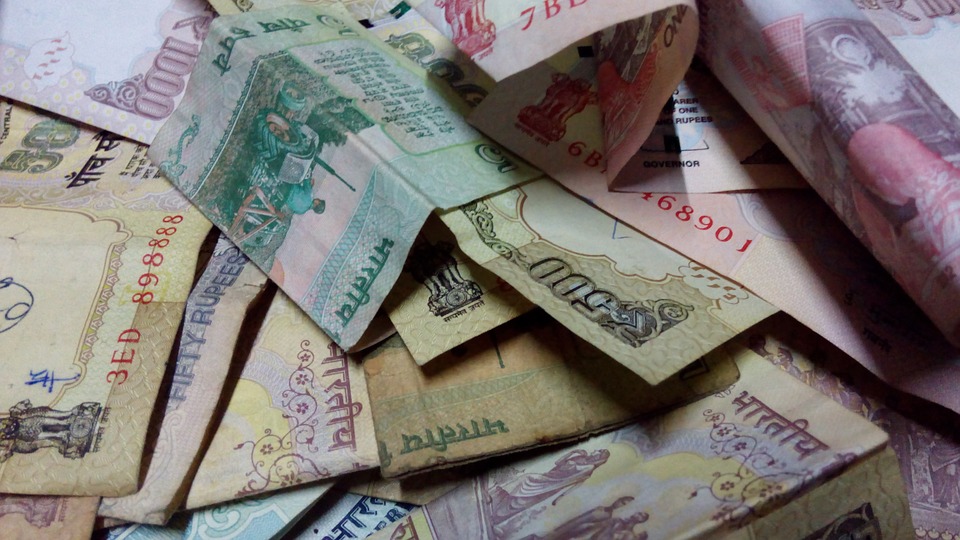According to the publication, Indian government's decision to terminate circulation of 500- and one thousand rupees’ banknotes came as a surprise for the country's residents and tourists. Experts doubt feasibility of the solution. Shadow market in India is so large that monetary reform dealt a blow to residents with low incomes, and brought many families to poverty.
Part of the country’s population found themselves on the brink of survival. They are accustomed to work with cash, and aren’t quite sure how to adjust to the electronic commerce.
Bloomberg’s experts hinted that the third largest Asian economy is on the brink of collapse after the unexpected decision withdraw large bills from circulation. Inhabitants of the country have about two months to exchange banknotes of 500 and 1 thousand rupees for new banknotes.
Neither banking institutions, nor ATMs saw it coming. Financial institutions are overloaded due to influx of visitors. Withdrawal limit was originally set at 10 thousand rupees per person per week. Exchange limit was 4 thousand rupees. The quotas are 24 thousand and 4.5 thousand rupees, respectively, yet the population is still outraged. Many ATMs simply do not work since they have not yet been adapted to new bills. Panicking people are buy everything: expensive watches and gold for rich, and any other items for others, who are hurrying to get rid of savings somehow.
However, those who have credit and debit cards have not particularly been affected by the innovations. Yet, there are still around 600 million Indians, who do not have bank accounts. Majority of the population lives in rural areas and gets paid only in cash.
The publication notes that the decision was not completely circumspect. It’s like to suddenly withdraw all cash dollars in the United States. Indian Prime Minister Narendra Modi jeopardized not only the local population but also tourists, most of whom were in possession of the obsolete banknotes.
Modi himself expects that such a decision will still pull the economy out of shadows, and will help fight corruption. As envisioned by the government, the decision will reduce share of the shadow economy, which is estimated at more than 20% of GDP. In India, 5.45 trillion rupees were taken out of circulation a few days after the reform. Since early November, the rupee-dollar exchange rate fell to 2.03%, and is now at 0,014. The government hopes that exchange of money will force people of India to declare previously unrecorded income, which will increase tax revenues.
The government of India makes no secret from the fact that the country's economic activity has slowed. Nevertheless, Prime Minister Narendra Modi still hopes that growth in October-December would slow to 5.5%, reports Business Line.
Growing public discontent forced Modi to appeal for understanding and ask for 50 days to stabilize the situation. If the currency reform does not bring effect after that time, India's Prime Minister will take all the blame and suffer punishment for it.
source: bloomberg.com
Part of the country’s population found themselves on the brink of survival. They are accustomed to work with cash, and aren’t quite sure how to adjust to the electronic commerce.
Bloomberg’s experts hinted that the third largest Asian economy is on the brink of collapse after the unexpected decision withdraw large bills from circulation. Inhabitants of the country have about two months to exchange banknotes of 500 and 1 thousand rupees for new banknotes.
Neither banking institutions, nor ATMs saw it coming. Financial institutions are overloaded due to influx of visitors. Withdrawal limit was originally set at 10 thousand rupees per person per week. Exchange limit was 4 thousand rupees. The quotas are 24 thousand and 4.5 thousand rupees, respectively, yet the population is still outraged. Many ATMs simply do not work since they have not yet been adapted to new bills. Panicking people are buy everything: expensive watches and gold for rich, and any other items for others, who are hurrying to get rid of savings somehow.
However, those who have credit and debit cards have not particularly been affected by the innovations. Yet, there are still around 600 million Indians, who do not have bank accounts. Majority of the population lives in rural areas and gets paid only in cash.
The publication notes that the decision was not completely circumspect. It’s like to suddenly withdraw all cash dollars in the United States. Indian Prime Minister Narendra Modi jeopardized not only the local population but also tourists, most of whom were in possession of the obsolete banknotes.
Modi himself expects that such a decision will still pull the economy out of shadows, and will help fight corruption. As envisioned by the government, the decision will reduce share of the shadow economy, which is estimated at more than 20% of GDP. In India, 5.45 trillion rupees were taken out of circulation a few days after the reform. Since early November, the rupee-dollar exchange rate fell to 2.03%, and is now at 0,014. The government hopes that exchange of money will force people of India to declare previously unrecorded income, which will increase tax revenues.
The government of India makes no secret from the fact that the country's economic activity has slowed. Nevertheless, Prime Minister Narendra Modi still hopes that growth in October-December would slow to 5.5%, reports Business Line.
Growing public discontent forced Modi to appeal for understanding and ask for 50 days to stabilize the situation. If the currency reform does not bring effect after that time, India's Prime Minister will take all the blame and suffer punishment for it.
source: bloomberg.com





